January 14, 2025
Check drainage systems as extreme weather eases, advises Catalyst
The UK is expected to emerge from a big freeze this week. But climate...

Damp conditions leading to the growth of mould in homes is a perennial problem. Media reports have made clear its devastating consequences, which is pushing damp and mould up the priority list for both social and private landlords.
Awaab Ishak died in 2020, eight days after his second birthday. In a verdict given in November 2022, a coroner determined that his death was caused by prolonged exposure to mould in his family’s flat in Rochdale, Greater Manchester.
The spores released by the mould had been breathed in by Awaab over many months, triggering a fatal respiratory illness.
The coroner concluded the mould had been a direct cause of the boy’s death. Greg Fell, vice-president of the Association of Directors of Public Health, said the verdict made clear the “hidden risk” mould posed to public health.
The coroner’s concern is backed by housing organisations and charities.
In 2021, following Awaab Ishak’s death, England’s Housing Ombudsman, a legal body that investigates housing complaints, published a report, Spotlight On: Damp and Mould.
The report found maladministration in 40% of the 373 adjudications it had made about the way social landlords responded to the need to fix damp and mould problems
In a survey by Shelter, 26% of private renters said their homes had significant mould, condensation and damp problems, representing an estimated 3.8m adult renters in the UK.
Of those who reported at least one issue with physical or mental health impacts from their homes, 14% said there was no mould issue, but 46% said mould was present.
The 2019-20 English Housing Survey found condensation and mould problems were present in at least one room in 133,000 (3%) social sector homes.
Damp is often a precursor of mould.
In its evidence to the Housing Ombudsman’s Spotlight report, the National Housing Federation, which represents social housing landlords, said damp was an issue in 7% of privately rented homes, 5.1% of council homes, 4% of housing association properties, and 2.1% of owner-occupied properties.
The Housing Ombudsman, Richard Blakeway, said his Spotlight report’s findings showed clearly that mould was not a lifestyle issue – as in, it was not caused by tenants by the way they lived.
Instead, it was a complex problem, with property maintenance playing an important role, and a problem that required thorough investigation of all possible causes of damp and mould in a property.
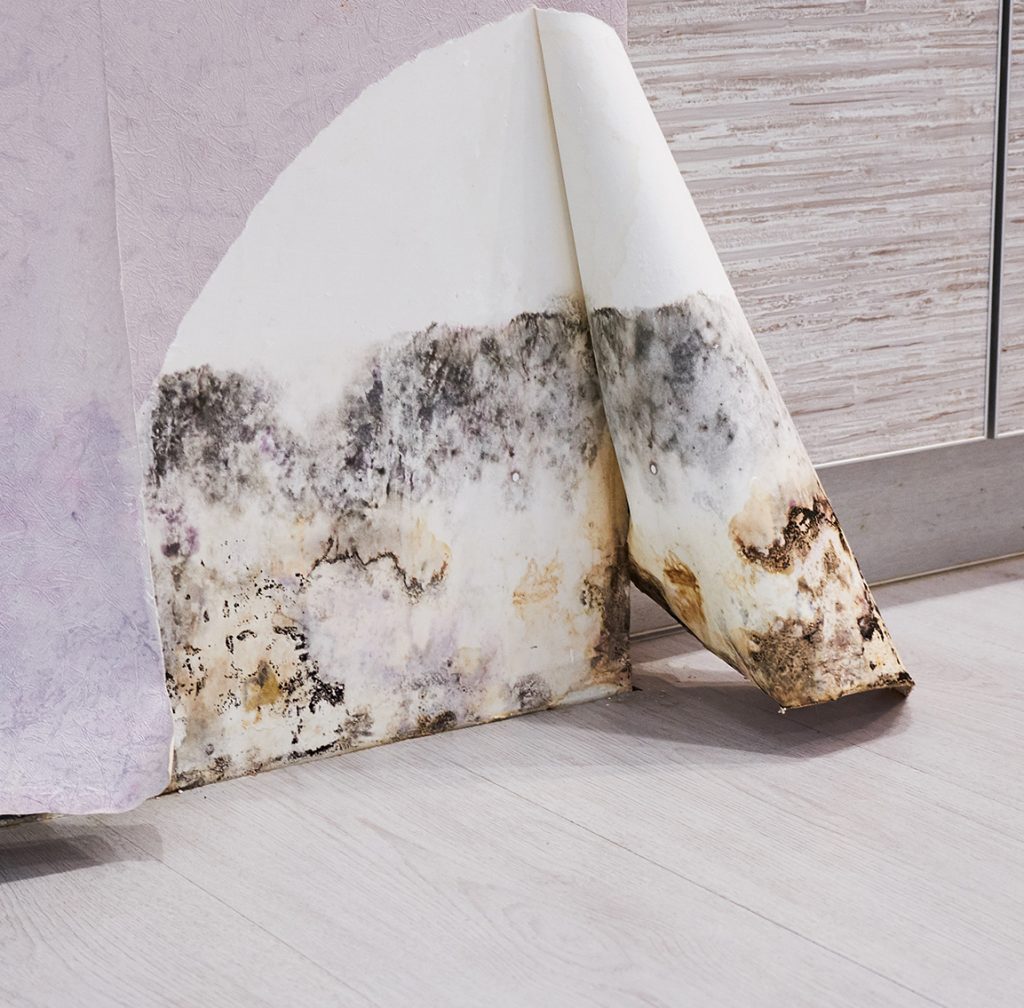
Mould is, indeed, a pernicious problem. It can be difficult to eradicate. It is important to clean it from surfaces before it can take hold. What’s just as important is to address the underlying issues that lead to its growth.
Mould grows in damp conditions, where walls, ceilings and floors in homes are damp, and these damp conditions persist, creating ideal conditions for the mould to take hold.
The key, then, is to investigate and understand what is causing property structures to become damp and stay damp.
In some cases, how a property is used can trigger mould growth. It will grow more readily where moist conditions persist, for example in kitchens and bathrooms, where condensation can build up.
Improving ventilation in these areas, for example with extractor fans or by opening windows to allow excess moisture to escape, may significantly reduce the problem.
Adequate heating of homes during winter, to keep dry rooms where mould may more readily develop, is often important.
With energy costs spiralling this winter, this is clearly a significant issue. Householders may turn down or turn off their heating systems, helping to create an environment in which mould can thrive.
In a report by the Guardian, housing ombudsman Richard Blakeway said landlords must make plans to tackle the “real risk of worsening damp and mould issues” caused by higher energy bills.

Mould can grow on many surfaces in the home, including painted and papered walls, tiles, fabrics, and plastics, when moisture is present.
There are two black moulds often found, Cladosporium and Alternaria fungi. A third black mould is Stachybotrys chartarum. This can release toxins that are harmful to humans and animals.
Damp and mould can trigger many medical conditions, including sneezing, a runny nose, red eyes, and skin rashes. It can also cause or make worse allergies, asthma, and other serious and chronic respiratory conditions.
Cladosporium and Alternaria, in particular, are associated with causing severe and fatal asthma attacks, a risk increased by long-term exposure to the moulds.
Stachybotrys chartarum has been identified as one cause of sick building syndrome, where the toxins released by the fungus make people to feel unwell.
Increasingly, housing managers and medical professionals are being urged to also consider the mental health impact of mould in homes, where householders may be distressed about the health risks, inconvenience and embarrassment it causes.

Our experience at Catalyst is that persistent mould is often also a sign of a deeper structural and maintenance issue that needs thorough investigation and potentially intervention.
Mould growth, as we’ve seen, is inextricably linked with damp in homes. So we need to look at the caused of damp problem to identify important underlying causes of mould.
Leaks in damaged water pipes are a common cause of damp in walls, floors and ceilings. A pin-prick hole in a water pipe, allowing water to leak out, can go undetected for weeks, if not months.
Over time, though, structures around the leak can become increasingly damp. It may, then, only be in winter that the tell-tale mould begins to appear. If behavioural issues are blamed, the leak may go undetected for many weeks more.
In some cases, the design of the substructure may be such that the damp area appears away from the pipe, which results in the water pipe not being diagnosed correctly as the cause.
A leak in an external water pipe may also trigger rising damp, leading to mould growth. The leaking water, if undetected, may cause the water table around the property to rise. Waterlogged soil above a damp course can allow moisture to rise into the walls.
As with water supply pipes, defective drains and sewers are common causes of damp in walls, floors and ceilings.
For example, cracks in downpipes can allow wastewater to seep into walls, creating damp areas on internal walls. With many properties, downpipes are attached to external walls, and water escaping from pipes is clearly visible due to damp patches developing on walls.
However, in older properties, cast iron downpipes are often embedded in walls, so faults are more difficult to see. Also, cast iron pipes corrode over time, creating holes or increasing the risk of snagging, causing blockages that can lead to water seepage (see below).
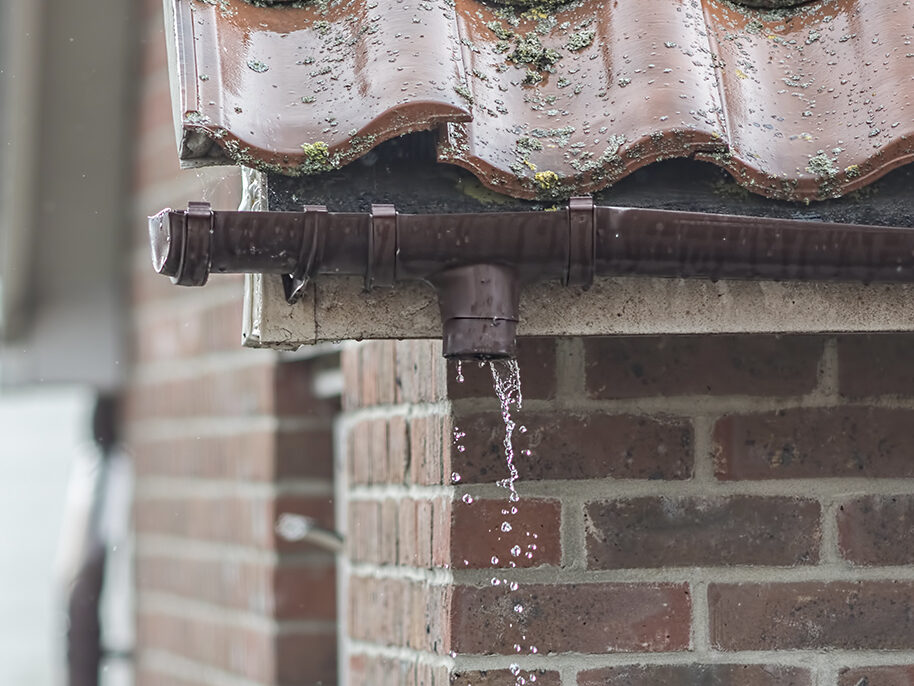
Leaks can go undetected for months, until damp has become a serious problem. A first tell-tale sign is often the appearance of mould. Even then, though, home owners many not put two-and-two together quickly, allowing the mould to persist and take hold over a long period.
Blocked downpipes, gullies, and sewer pipes can also lead to water seeping out into walls and ceiling.
This can definitely be made worse by modern trends in the use and abuse of drains. For example, liberal use of liquid soaps can result in residue building up in pipes reducing their capacity, resulting in slow draining of water.
In effect, the water is standing in the pipe for a period as it drains, increasing the risk of water seeping out into walls through defective joints.
The disposal of wet wipes, and other disposable items down toilets, can also results in the regular blocking or long-term partial blocking of pipes, creating the same effect.
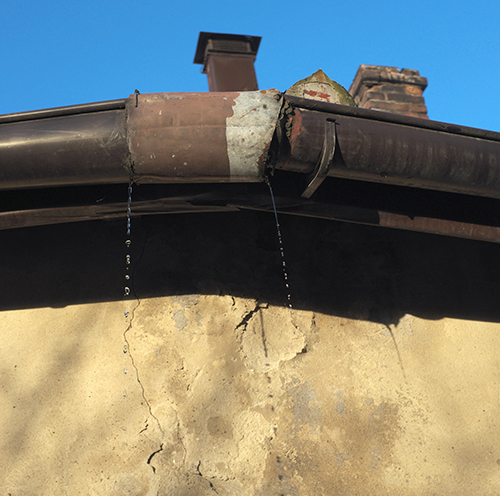
Many people do not take note of the fact that guttering is a vital part of effective drainage systems. Blockages, leaks and the use of gutters with inadequate capacity can add increase the risk of damp every time it rains.
Rainwater spilling over the top of gutters or escaping through defective joints or cracks onto walls can cause an almost permanent damp patch that can lead to water seeping though into internal walls.
The inevitable result, in many properties, is the development of mould. However, many property owners or tenants often do not see the connection, allowing the damp and mould problem to get worse and worse.
Failure to carry out appropriate maintenance of drainage systems can also have a knock-on effect, by invalidating insurance claims.
Most modern homes are not built with cellars. However, in inner-city areas, basement living spaces are becoming more common, either in new properties or as a cellar conversion.
As cellars and basements are below ground level, they are more prone to damp, which can lead to mould growth. In traditional cellars, good ventilation is key to reducing the risk of damp, by removing excess moisture.
In these spaces, penetrating damp is the main problem. But underground sewer and water pipes, either running next to or below cellars or servicing basement kitchens and bathrooms, can also cause damp if they leak.
In some cases, measures taken to control damp when the cellar was first built may have been compromised, for example by blocking ventilation systems or changing external ground levels.
Interestingly, mould can be a sign of another fundamental problem, and that’s subsidence.
Ground subsidence can disrupt a building’s foundations and damp course structures, reducing its ability to prevent damp rising into the home.
It can also damage underground pipe systems. Water supply pipes can be ruptured, causing leaks. Sewer pipes can also become cracked or sag, displacing joints, allowing water to escape.
Subsidence often causes cracking in walls, creating a pathway for water to seep into structures. Over time, these processes can result in walls, floors and ceilings become damp, triggering mould growth.
As the housing ombudsman’s report makes clear, social and private landlords are likely to need to take multiple actions to respond effectively to damp, condensation and mould problems in their properties. On the wider scale, it is a complex issue.
Carrying out the right investigations to establish the cause of damp within properties, then treating damp and repairing structures to prevent mould from returning must play a central role in any response
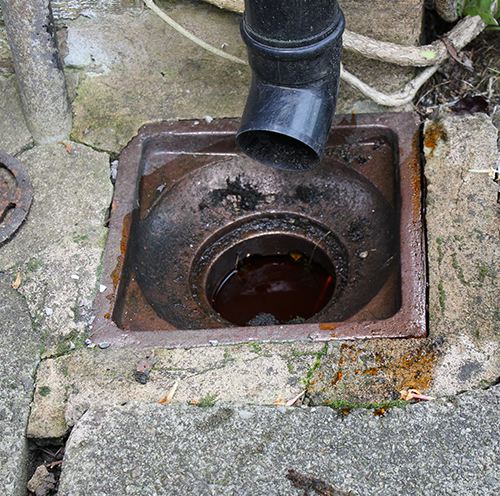
In some cases and full liner may need to be installed if a longer run of pipe is damaged. If the drainage pipe is too badly damaged, for example, if it has collapsed, it may need to be excavated and replaced.
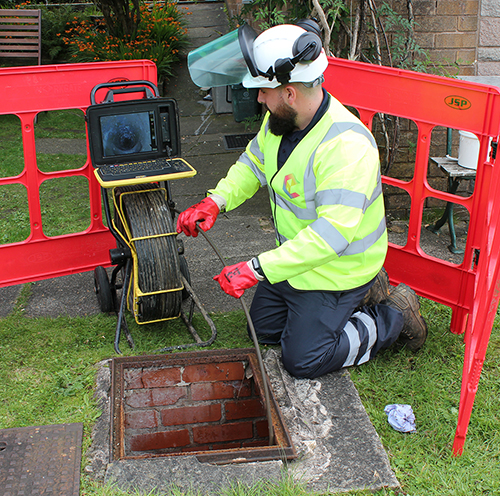
Carrying out a CCTV drainage survey is likely to play an important part of any investigation into damp problems that are triggering mould growth.
The survey will establish the condition of pipework, both underground and within the building, to see if defects, cracks, displaced joints, or pipe collapses are allowing water to seep into substrates.
The CCTV drainage survey is vital to decide the right responses. These could include installing a patch cured in place pipe (CIPP) liner over the defect to make the pipe watertight once more.
Carrying out an investigation to find out if there is a water leak, allowing water to escape into structures and caused damp, and where the leak is located, is vital if the problem rests with the water supply pipe system.
There are a wide range of techniques for detecting water leaks, both underground or in pipes inside buildings. They include using ground microphones (acoustic profiling), water listening sticks, leak correlation, and tracer gas analysis.
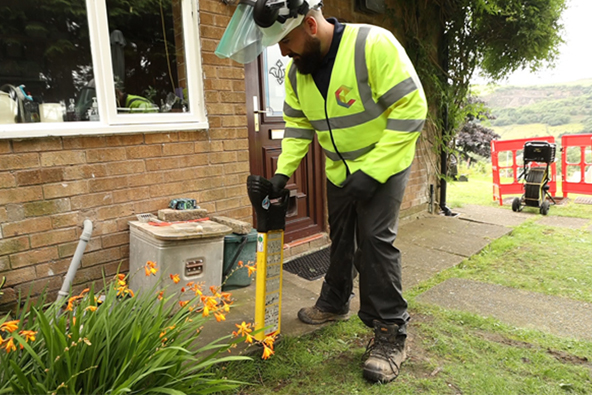
Brad Jackson is the Managing Director of Catalyst Services UK, which provides specialist services for the investigation, repair and replacement of drainage systems, including off-mains drainage and water supply systems.
It also has a subsidence investigation services and a UK-wide emergency service. Catalyst works for insurance companies and property managers, as well as commercial and domestic clients.